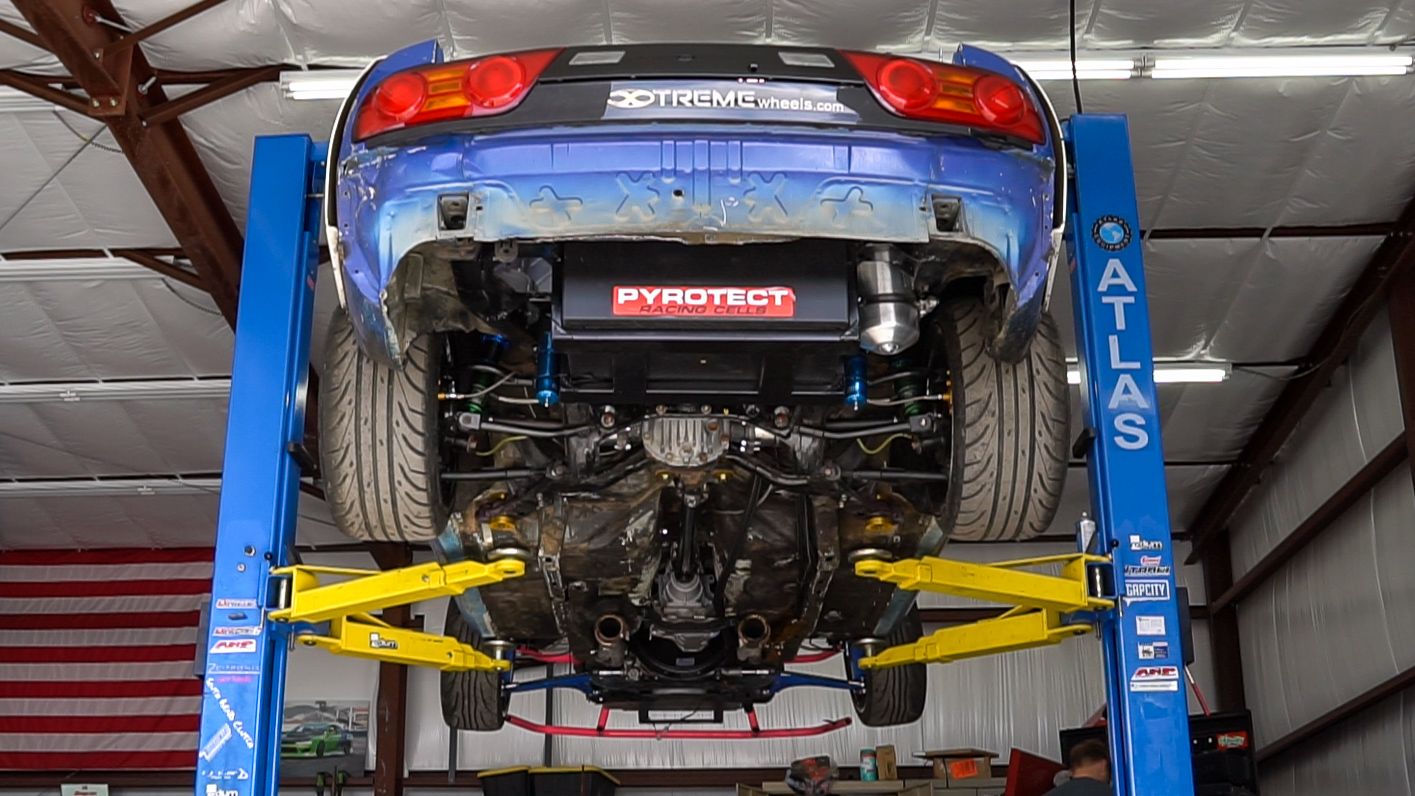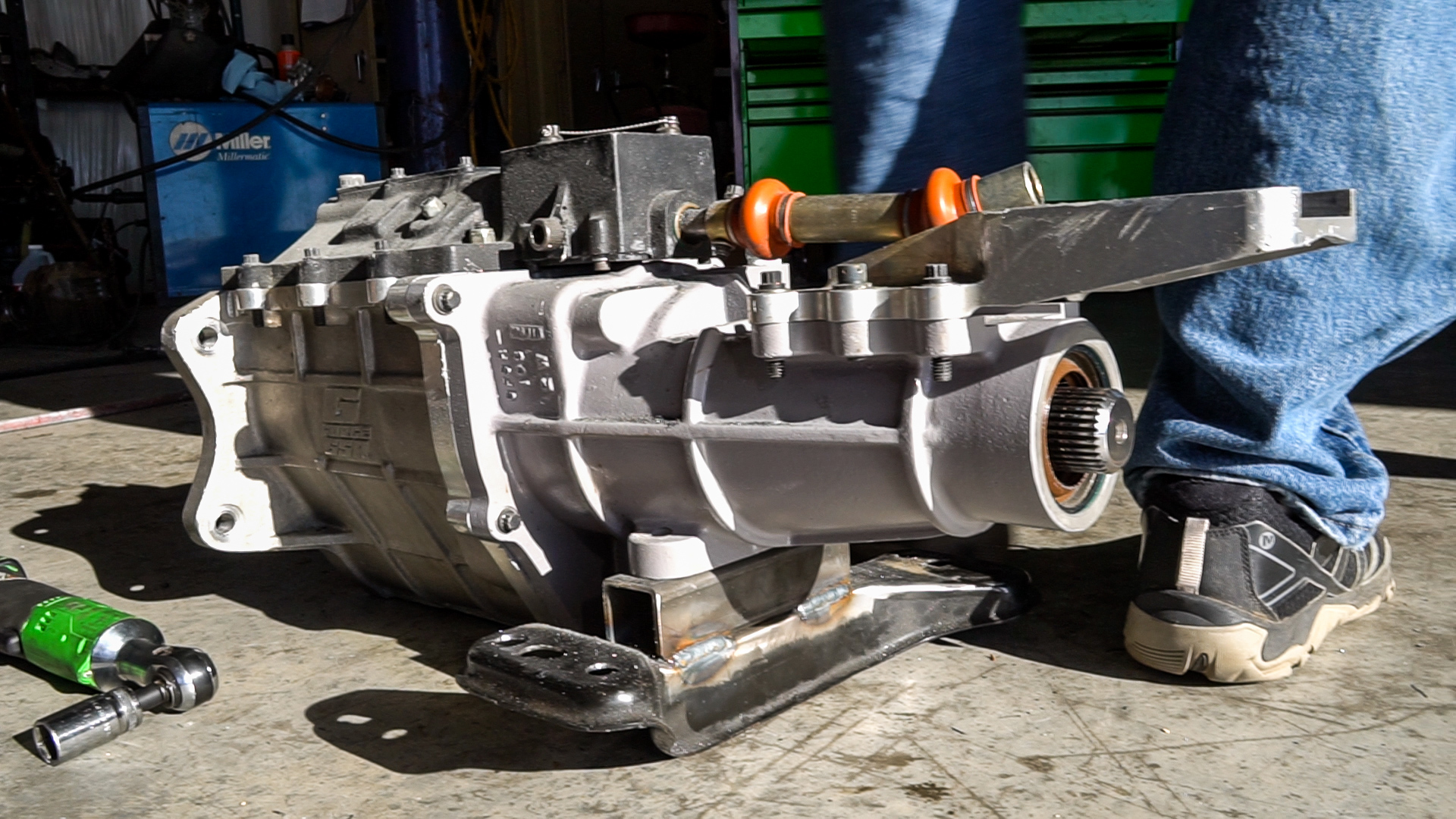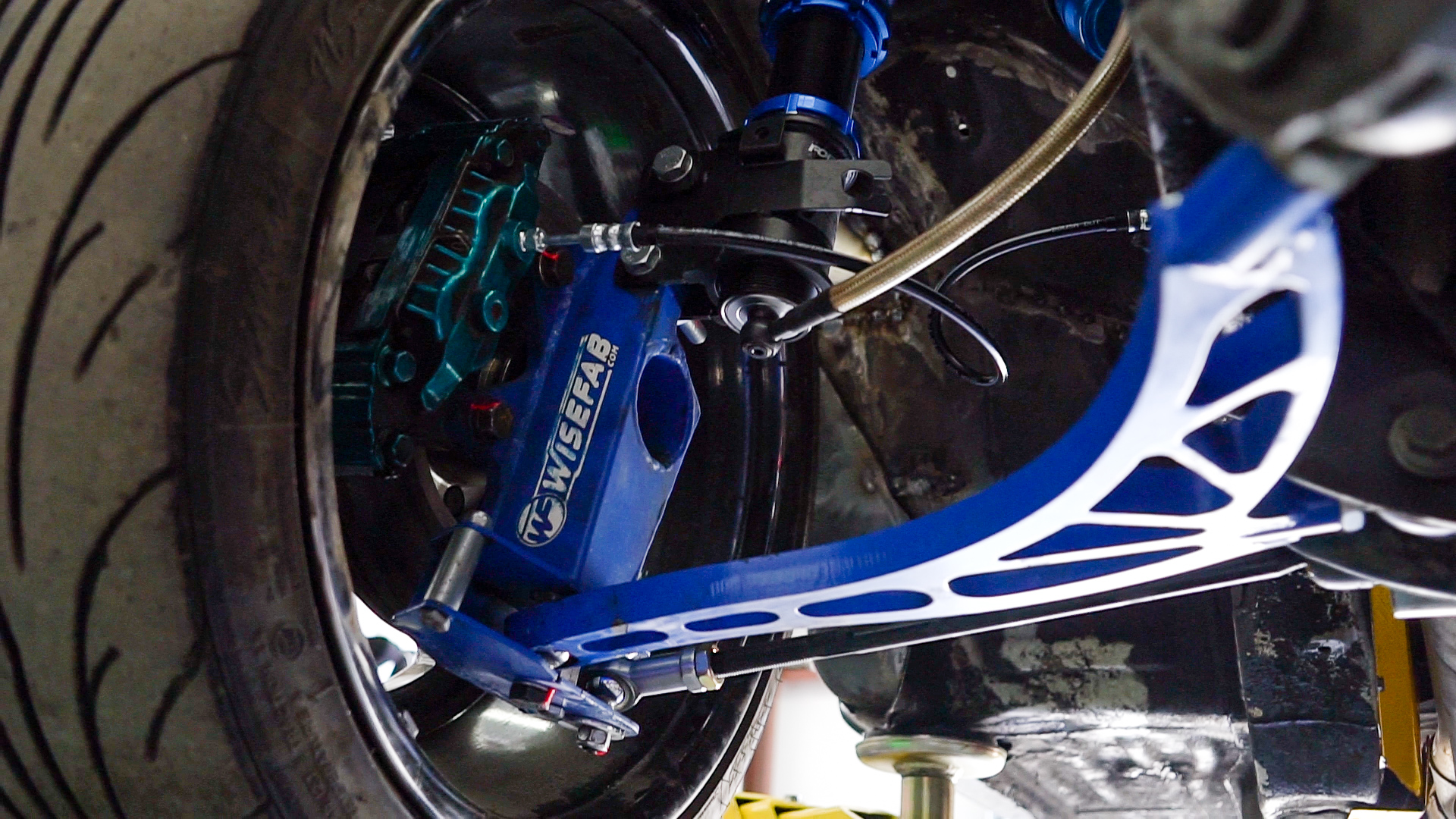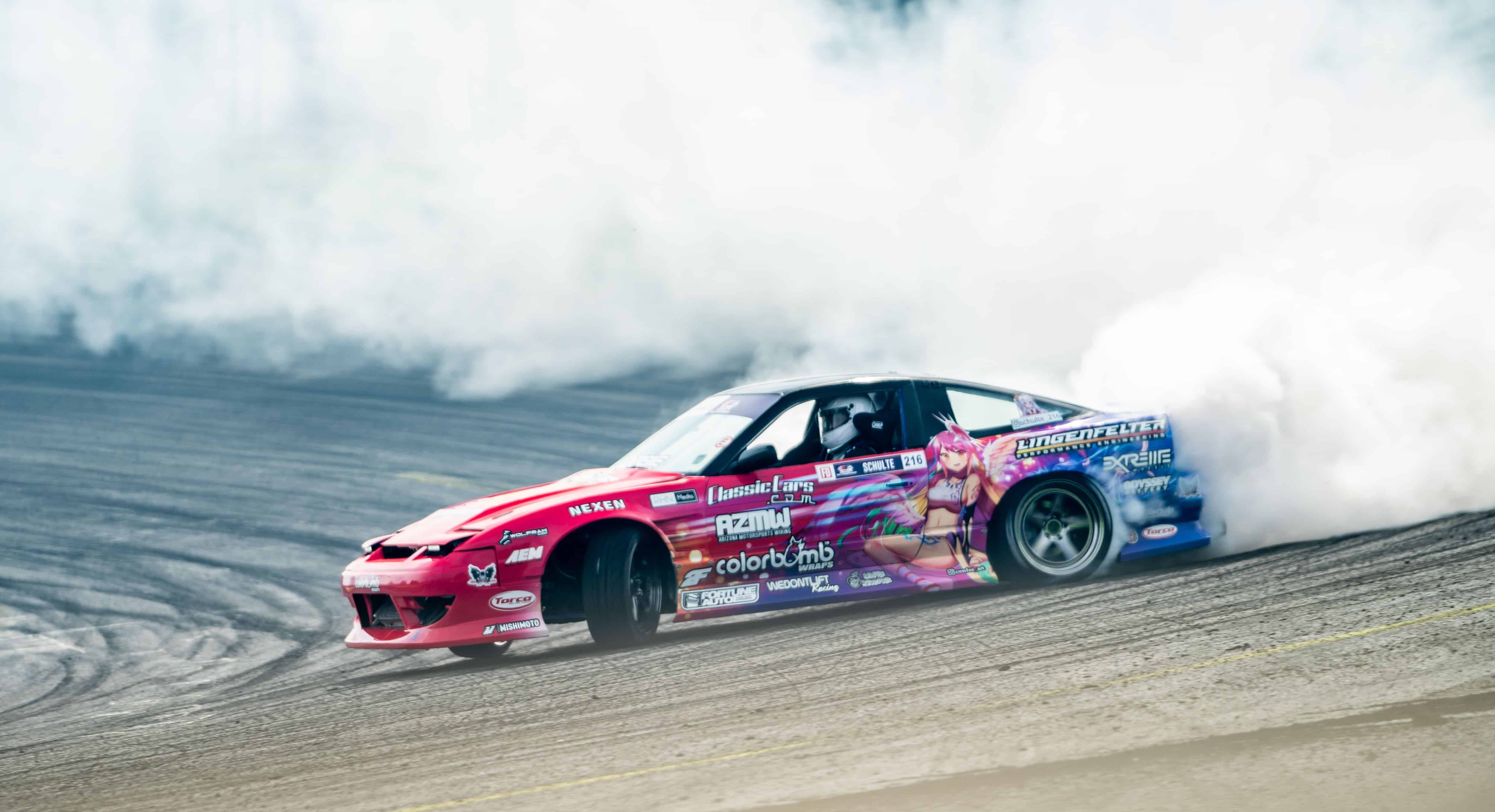One of the most attractive features of Formula Drift is the variety of cars competing in the series, and there are rules in place that encourage this.
For one thing, cars must have been factory-made and sold for use on public roads. For another, there are restrictions on modification of the car’s body between the strut towers, including how close to factory-spec that suspension mounting points must remain.
However, other than a Formula Drift-spec cage and other required safety equipment, there are no restrictions on power. This season, Formula Drift has almost every form of power-producing engine available, with some being supported from factory performance teams and by privateer big power builders. Many of the cars are producing more than 1,000 horsepower this season.
You can use whatever manual transmission you want to send that power to the rear wheels, and you can fabricate it to fit. However, getting any to put down all that power in is another story.
With no previous history of competitive drifting as a sport outside Japan, there was a lot of unexplored development territory for drivers, engineers, and fabricators.

“American drifting will always take it a step further.” explained Kevin Wells, competition director for Formula Drift.
The Nissan S14 Silvia is considered the most popular drift car of choice in Japan so it only made sense to start drifting the American version aka Nissan 240SX. The car has a 98.8-inch wheelbase, independent rear suspension and is light in weight. It also was well developed for drifting in Japan before the sport arrived in the U.S.
Among American cars, the most popular with drift teams is the Ford Mustang. It was affordable, had a wheelbase of just more than 100 inches and has proven competitive in everything from ProAm to Pro1 competitions. It also now features independent rear suspension.
Implementing what was known as the Japanese style of suspension tuning worked, but there was a need to make the cars slide sideways at higher speeds and with more angle. More power and angle means bigger tires and a lot more tire smoke. This was very exciting to see for the fans but it brought new challenges to keep the car under control.

Tuners started looking at other motorsports for inspiration. Sliding cars in America as a motorsport isn’t really a new thing. Small dirt oval tracks have been popular for decades and on many the cars spend the entire race sideways. The lateral grip they achieve can be astounding, but they are tube-chassis cars built specifically for this kind of racing.
Tuners also looked at rallying and road racing, which also may have strict chassis regulations.
Formula Drift went through growing pains as teams worked desperately to find the right setup for their drivers.
“You have to understand what the driver is feeling or you will never get it right.” said Mike Kojima, suspension engineer for driver Dai Yoshihara.
Kojima was instrumental in working on communication with Dai, who was very limited in his use of the English language at the time. But their effort paid off with dramatic changes in Dai’s performance leading to a Formula Drift Championship Series win in 2011.
Communication between driver and engineer is critical, and requires patience, understanding and focus.
As development continued, drifting was growing internationally and drivers were competing around the world. Daigo Saito is a championship-winning drift driver from Japan known for some elaborate drift car builds. The car he entered in Formula Drift for his rookie year was a Lexus SC430 with a 2jzgte engine and was arguably the first drift car in the series to have over 1000 horsepower delivered to the wheels. Most American drift cars were maybe 700 horsepower, tops, at the time.
Along with his ability to adapt to Formula Drift-style of competition, Saito used his power to win the 2012 series championship in his rookie year. This began what was known as the “Horse Power Wars” and changed Pro Formula Drift cars forever.
With the push for more power going into the 2013 season, suspension tuners were working hard trying to find grip in the car all while keeping it from spinning out of control. The demand was tough, and the consequences were becoming evident with more crashes and mechanical failures occurring in each round.

Teams worked hard to find the right suspension setup. One result was the first custom suspension performance product utilized only by drift cars: The angle kit. Adding angle to the car was not new, with some teams cutting and welding shorter tie rod pick up points and other home-brewed fabrications. But they were not able to address how that affects other parts of the suspension including preventing binding from full travel of the shocks and Ackerman angle.
The manufactured performance angle kits are designed from scratch to replace most linkages and steering knuckles specifically to keep the front wheels free from factory angle limitations while allowing 60 to 70 degrees of steering angle from center. They are made specifically to fit most of the popular chassis used in competition drifting.
The increased front suspension adjustability allowed suspension tuners to experiment confidently with the steering inputs while in drift at high speeds with less stress on trying to avoid spinning out. This allowed drivers to put on an incredible show of skill with more consistent door to door tandem battles at incredible speed while barreling cyclones of tire smoke around the entire course.






Great explanation!